AOPA Annual Report 2020
Great question!

What a year it was. As we do each year, this is the annual report of the association for 2020. It was a year when we stayed home, learned about a different kind of flight safety, canceled events, and mourned lost lives. However, just as we have done through wars, unrest, and strife, AOPA has continued its mission to protect your freedom to fly. There are numbers here—how much we spent, how much we raised, the impact of your dues and contributions, but at the heart of this report is the belief that you, our members, deserve our utmost attention and support.
"How can we bring more people into aviation?"
 Elizabeth Tennyson, AOPA You Can Fly executive director
Elizabeth Tennyson, AOPA You Can Fly executive director
AOPA’s You Can Fly program, which consists of four initiatives—High School, Flight Training, Flying Clubs, and Rusty Pilots—has made significant progress. Thanks to the program, more than 8,500 students in 38 states are participating in the high school aviation STEM curriculum this school year; more than 160 flying clubs have been started; $1 million has been allocated for flight training scholarships in each of the past few years; and, already in 2020 alone, more than 1,000 rusty pilots have returned to the sky. Our sights are set on the initiatives’ long-term goals, including reaching 8,000 high school students in each grade per year with the High School Aviation STEM Curriculum, reducing the student pilot dropout rate, and providing flight training support to 10,000 flight students through an app tailored to their individual experiences. Growing the number of pilots in the AOPA Flying Club Network to more than 10,000, and getting 15,000 lapsed pilots back in the air are also future goals of the program.
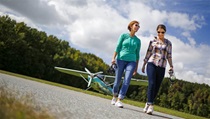 AOPA’s You Can Fly program is a huge success and every dollar has made a difference in an aviator’s life. Fueling the future of GA takes a little dedication and a lot of generosity. Thank you to our members and donors for being a part of the community that will keep GA alive.
AOPA’s You Can Fly program is a huge success and every dollar has made a difference in an aviator’s life. Fueling the future of GA takes a little dedication and a lot of generosity. Thank you to our members and donors for being a part of the community that will keep GA alive.
“What is AOPA doing to reduce the cost of flying?”
 Jim Coon, AOPA senior vice president government affairs and advocacy
Jim Coon, AOPA senior vice president government affairs and advocacy
Any good coach knows the best teams are made up of a strong offense and defense, and that’s exactly how AOPA continues to succeed at promoting and protecting your freedom to fly. In the past five years, we’ve gone on the offensive, creating cost-saving initiatives to help pilots fly more often and more affordably. And we’ve defended GA against harmful regulations and legislation.
These efforts include a significant update to Part 61 of the federal aviation regulations in 2018, which allows broader use of aircraft and simulator technology to reduce the cost of flight training and proficiency. Our persistent effort is expected to save the GA community approximately $113.5 million over five years.
Another regulation that is expected to put money back in pilots’ wallets—nearly $70 million over the next 10 years—is third class medical reform. Already more than 60,000 pilots strong, BasicMed eliminates some of the red tape associated with regular and special issuance medicals and gives the power back to the pilots and their personal physicians. Pilots and their doctors finally can have an open conversation about their fitness to fly.
 We’re also fighting to save you money where you live and fly—by bringing transparency to FBO fees and GA ramps so you can make informed decisions before you fly. While some FBOs have made their fees available online, many have not, and we will continue to push on this. Our AOPA-led coalition of more than 300 general aviation organizations is urging the FBO industry and airport community to pay attention to their responsibilities for protecting airport access for all pilots and insisting on publicly disclosed fees online, whether piston or turbine, and using standardized labels for GA parking ramps on airport diagrams.
We’re also fighting to save you money where you live and fly—by bringing transparency to FBO fees and GA ramps so you can make informed decisions before you fly. While some FBOs have made their fees available online, many have not, and we will continue to push on this. Our AOPA-led coalition of more than 300 general aviation organizations is urging the FBO industry and airport community to pay attention to their responsibilities for protecting airport access for all pilots and insisting on publicly disclosed fees online, whether piston or turbine, and using standardized labels for GA parking ramps on airport diagrams.
Our work with the FAA to streamline the pathway for bringing modern equipment into the existing GA fleet through non-TSOed avionics is another cost-saving initiative. By giving pilots easy access to more affordable options, such as solid-state attitude indicators, and other safety enhancing devices—and saving thousands of dollars at the same time—we are improving safety and reliability and lowering costs. AOPA also championed a provision in the National Defense Authorization Act, which became law and requires the FAA and the Department of Defense to provide real-time status of special-use airspace directly into the cockpit. Implementing a system like this could save $100 million annually in fuel burn (for all sectors of aviation) and improve our environment by significantly reducing carbon emissions.
“Is BasicMed safe?”
 Gary Crump, AOPA senior director of medical certification
Gary Crump, AOPA senior director of medical certification
BasicMed, through the online medical education course, has allowed pilots to fly with more knowledge about their health than ever before and provides GA pilots with an opportunity to visit an aviation medical examiner or their private physician for a physical. The BasicMed certification process was long overdue and is a beacon for similar reforms around the world.
More than 60,000 aviators are flying safely under the program’s medical privileges. Born from a longstanding demand for change in the medical certification process for general aviation pilots, BasicMed is a major victory for the GA community. BasicMed was signed into law on July 15, 2016. Its passage was a significant achievement as only about 3 to 4 percent of bills ever become law.
 AOPA worked with neighboring countries, including the Bahamas and Mexico, to accept BasicMed pilots, and continues to encourage Canada to follow suit. Globally, countries have also taken steps to address their bureaucratic medical processes. The United Kingdom, Australia, Canada, and Europe along with the United States have all developed alternatives to decades-old medical processes. These countries account for more than 80 percent of GA pilots worldwide.
AOPA worked with neighboring countries, including the Bahamas and Mexico, to accept BasicMed pilots, and continues to encourage Canada to follow suit. Globally, countries have also taken steps to address their bureaucratic medical processes. The United Kingdom, Australia, Canada, and Europe along with the United States have all developed alternatives to decades-old medical processes. These countries account for more than 80 percent of GA pilots worldwide.
Are these more than 60,000 BasicMed pilots safe? According to NTSB accident reports, medical incapacitation as a cause of aircraft accidents is an extremely rare occurrence under any class of medical certification.
“How can we save our GA airports?”
 Melissa McCaffrey, AOPA Western Pacific regional manager airports and advocacy
Melissa McCaffrey, AOPA Western Pacific regional manager airports and advocacy
AOPA is constantly striving to protect threatened airports. Reid-Hillview and Santa Monica are two in peril in my own state of California. Another is Kawaihapai (formerly Dillingham) Airfield in Hawaii, where we’ve worked with the state legislature to come up with a legislative solution.
All across the country AOPA staff and volunteers work on airport issues every day. As someone who is actively involved in your local airport, you know the benefits that community airports provide. General aviation carries 170 million passengers more than 3 billion miles each year, with an annual economic impact of $247 billion.
More than 5,000 public-use community airports form a network connecting 19,000 cities, towns, and suburbs nationwide. GA provides these communities with vital services, including transportation, law enforcement, firefighting, and air ambulance, among others.
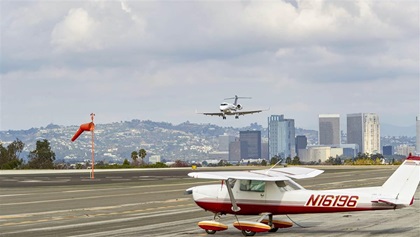 Unfortunately, not everyone appreciates the value of local airports, but we work hard to educate decision makers and communities. Despite our efforts, issues related to airport safety, security, and noise sometimes lead to misinformed calls for restrictions or even airport closure.
Unfortunately, not everyone appreciates the value of local airports, but we work hard to educate decision makers and communities. Despite our efforts, issues related to airport safety, security, and noise sometimes lead to misinformed calls for restrictions or even airport closure.
AOPA’s Airport Support Network was launched in 1997—amid the battle over Chicago’s Meigs Field—as a front-line force that could anticipate threats to local airports and work proactively to ensure that public-use airfields are valued by the communities they serve. Today, I am proud to say that we have almost 1,900 ASN volunteers and growing and they’ve done a great job helping save numerous airports across the country.
“How do I persuade my friends and family that general aviation is safe?”
 Richard McSpadden, AOPA Air Safety Institute senior vice president
Richard McSpadden, AOPA Air Safety Institute senior vice president
Help them look at GA in context. The AOPA Air Safety Institute’s recent edition of the Joseph T. Nall Report noted a continued decrease in overall accident rates. The overall accident rate in 2018 was 4.56 per 100,000 flight hours. The fatal accident rate also decreased to 0.74 per 100,000 flight hours in 2018.
We’ve cut our fatal accident rate in half over the past 25 years and we keep improving. The reason? Our industry is highly regulated. Pilots must meet stringent guidelines to earn and maintain a pilot certificate. These guidelines include requirements that ensure pilots maintain minimum currency levels. Of course, these are the minimums. You can help your friends and family appreciate your efforts above and beyond the minimums by sharing the work you put into maintaining knowledge, seeking training, and working to maintain high proficiency levels. We’ve also benefitted from substantial improvements in equipment, from engine analysis tools to cockpit weather and electronic flight displays that offer synthetic vision and a host of tools that help us prepare and eliminate the unknown.
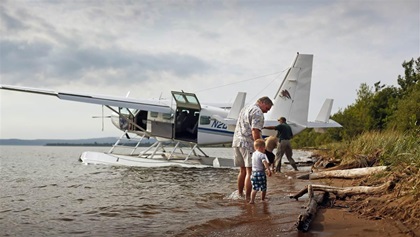 You may also remind your friends and family that aviation remains a fascination to many, which is why nearly every accident in aviation makes the news, making flying seem daunting. In reality, we fly some 25 million flight hours a year in general aviation. That’s tens of millions of flights that occur safely, and we never hear about those. Nor should we, as those are routine and more representative of the safety performance in general aviation.
You may also remind your friends and family that aviation remains a fascination to many, which is why nearly every accident in aviation makes the news, making flying seem daunting. In reality, we fly some 25 million flight hours a year in general aviation. That’s tens of millions of flights that occur safely, and we never hear about those. Nor should we, as those are routine and more representative of the safety performance in general aviation.
Finally, let your friends and family be involved in your flight planning and understanding your decisions. They’ll take comfort in appreciating your skill and your deep awareness and analysis of what seems to them like a complex and unknown environment. One of the best places you can go for knowledge and training is the AOPA Air Safety Institute website. There’s a reason our material is accessed more than 12 million times a year. It’s compelling, educational material to help you become a safer pilot.
“Is general aviation economically viable?”
 Jennifer Non, AOPA communications senior manager
Jennifer Non, AOPA communications senior manager
General aviation is a $247 billion industry that employs 273,500 workers and indirectly supports 1.2 million jobs while keeping a fleet of more than 211,000 aircraft flying for business and individual operators, according to the PricewaterhouseCoopers study Contribution of General Aviation to the U.S. Economy in 2018, which found an upbeat trend in key metrics since the last industry update from 2013.
You can measure GA’s importance to the economy from various vantage points—and the report covers the bases, noting that each of the 273,500 full- and part-time jobs directly involved in general aviation “supported 3.3 jobs elsewhere in the economy.”
The industry generated $77 billion in labor income—that’s wages, salaries, benefits, and proprietors’ income—and kicked in $128 billion to U.S. gross domestic product. (GDP is the value of the goods and services produced in the United States. GDP was $20.49 trillion in 2018.)
 Overall, total GDP impact attributable to general aviation amounted to approximately $393 per person in the United States in 2018. Beyond directly employing hundreds of thousands of Americans, GA has ripple effects throughout the economy, from the supply chain down to visitors’ spending at their destination.
Overall, total GDP impact attributable to general aviation amounted to approximately $393 per person in the United States in 2018. Beyond directly employing hundreds of thousands of Americans, GA has ripple effects throughout the economy, from the supply chain down to visitors’ spending at their destination.
"How do I keep the FAA off my back?"
 Justine Harrison, AOPA general counsel
Justine Harrison, AOPA general counsel
Pilots should always seek specific legal advice tailored to their unique situation. Still, a few general principles can help pilots be informed in preparation for an FAA inspector or air traffic personnel contact.
There are many do’s and don’ts for different situations faced by general aviation pilots operating under Part 91 rules to help you avoid issues that have caused trouble for other pilots in the past.
Always contact the AOPA Legal Services Plan at the first hint of an issue by calling us at 800-872-2672, extension 4; be professional and courteous when interacting with FAA personnel; remember your rights under the Pilot’s Bill of Rights and that you are seldom required to make any statements to an FAA inspector. Anything you say can be used against you.
 If you find yourself in a situation with the FAA, one of the most important pieces of advice is to remember that you don’t need to figure it out alone. AOPA members with Pilot Protection Services expect the unexpected, know how to respond, and call the Legal Services Plan at the first sign of an issue.
If you find yourself in a situation with the FAA, one of the most important pieces of advice is to remember that you don’t need to figure it out alone. AOPA members with Pilot Protection Services expect the unexpected, know how to respond, and call the Legal Services Plan at the first sign of an issue.
“Will aviation survive COVID-19?”
 Thomas B. Haines, AOPA senior vice president media, outreach, and communications
Thomas B. Haines, AOPA senior vice president media, outreach, and communications
While commercial aviation suffered a dramatic downturn, flying the fewest airline flights since at least 1987, general aviation activity has remained robust aside from the first two months of the pandemic. Starting in June of last year, GA traffic rebounded as flight schools figured out how to conduct training while being safe. In fact, activity at the top GA airports remained higher in 2020 and into 2021 than it had been a year earlier, often by 10, 20, even 30 percent, especially on weekends.
The values of quality used aircraft soared as buying activity picked up. Most avionics and engine overhaul shops remained busy. Charter flights also picked up a few months into the pandemic as individuals discovered they could still safely travel while avoiding the airlines. The FBO business was depressed as corporate aircraft remained mostly grounded because of company travel bans. International corporate flying essentially stopped because of restrictive border crossing policies.
We continue to remain optimistic as hiring in GA picks back up. In fact, aviation job postings are showing a marked increase with interest in positions for maintenance technicians, corporate pilots, medical evacuation specialists, and certificated flight instructors, as my staff reported on AOPA Online.
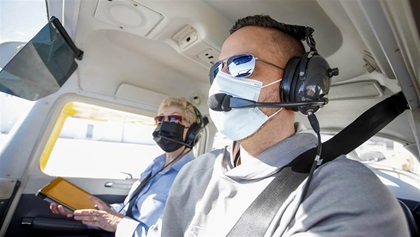 “January alone has seen a record number of job postings on JSfirm.com, even compared to pre-pandemic numbers,” said JSfirm.com Executive Director Abbey Hutter, calling attention to a 19-percent increase in job postings over the previous quarter. In addition, website traffic from job seekers has been on a steady increase since the new year. January job seeker activity increased by 48 percent over December 2020, and the number of pilots “who have joined our website as job seekers has doubled over the past year,” Hutter said.
“January alone has seen a record number of job postings on JSfirm.com, even compared to pre-pandemic numbers,” said JSfirm.com Executive Director Abbey Hutter, calling attention to a 19-percent increase in job postings over the previous quarter. In addition, website traffic from job seekers has been on a steady increase since the new year. January job seeker activity increased by 48 percent over December 2020, and the number of pilots “who have joined our website as job seekers has doubled over the past year,” Hutter said.
“I think the way to look at it is that I don’t think there is a sector that’s not hiring, except for some of the major airlines,” Hutter added. She said it’s a situation in which companies realize they need to be in a position of strength when travel returns so they can quickly spin up operations. “Some of them are saying, ‘We either need to grow or we’re going to go out of business,’ so they’re hiring again.”
“What does aviation’s future look like?”
 Mark Baker, AOPA president and CEO
Mark Baker, AOPA president and CEO
General aviation continues to contribute to our nation’s economy and benefits thousands of communities in a very positive way. But, there’s much work to be done. We must continue to work together to inspire the next generation of pilots and aircraft technicians, and honor this uniquely American industry and its exceptional impact on our country.
I find solace in flying; it’s my time to think and appreciate how blessed I am to have the freedoms that I do—namely the freedom to fly. Since 1939, AOPA has stayed true to that mission, laid out by its founders. We continue to advocate on behalf of our members, educate leaders and policy makers alike, and support activities that ensure the long-term health of GA. We’ve done so in great times and down times. Some of our initiatives have changed over the years, but the core of our mission remains the same.
AOPA continues to grow the pilot population by bringing more aviators to the skies, keeping them there, and keeping them safe. We are championing the idea of aviation workforce development with Congress. The National Center for the Advancement of Aviation would bring together all sectors of the aviation industry to collaborate on emerging technologies and training methods, maintenance and technician development, dissemination of STEM aviation curriculum in schools, helping veterans transition to opportunities in the aviation sector, and conducting aviation safety data analysis and research. We need an industry coordinated approach to address workforce needs and the NCAA provides that missing piece.
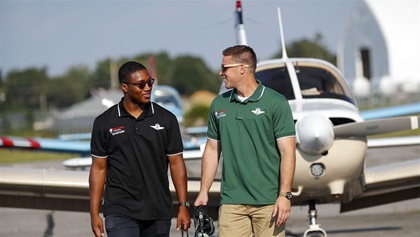 I hear from many pilots about the frustration with the delays when it comes to special issuance medicals. AOPA is working with the FAA to address this issue and our Board of Medical Advisors is helping to develop these long overdue changes. There is no reason that the FAA cannot use today’s technology to communicate with pilots and aviation medical examiners. And while we have made some progress with getting more designated pilot examiners in the field, we have a long way to go. This remains a top priority for us. No one should have to wait months for a DPE.
I hear from many pilots about the frustration with the delays when it comes to special issuance medicals. AOPA is working with the FAA to address this issue and our Board of Medical Advisors is helping to develop these long overdue changes. There is no reason that the FAA cannot use today’s technology to communicate with pilots and aviation medical examiners. And while we have made some progress with getting more designated pilot examiners in the field, we have a long way to go. This remains a top priority for us. No one should have to wait months for a DPE.
The FAA plans to advance a sweeping initiative to bring reforms to the light aircraft category, amateur-built aircraft, and the legacy fleet. We are excited about the Modernization of Special Airworthiness Certificates (MOSAIC), which at its heart includes changing limitations on light sport aircraft, and believe it has the potential to fundamentally change and modernize the GA fleet.
These initiatives represent a fraction of what our organization does daily. From our nationally recognized government affairs team advocating on behalf of GA on Capitol Hill, to our regional managers who deal with hundreds of local airport issues each year, to our staff in Frederick working on behalf of our members, AOPA is an effective leader in promoting and protecting GA, fueled by support from our members who all share the passion of flight.
“Where does the money come from for all AOPA’s initiatives?”
 Melissa Rudinger, AOPA Foundation executive director
Melissa Rudinger, AOPA Foundation executive director
Nothing we do would be possible without our members, and your dues go a long way to preserving and promoting the freedom to fly. The AOPA Foundation is the philanthropic arm of AOPA. Your contributions fund programs that membership dues don’t cover, including the AOPA Air Safety Institute and You Can Fly program.
Many members share a deep commitment to the future of aviation, which is why we have seen such an incredible outpouring of support in the form of contributions to the AOPA Foundation. Our goal is to fund opportunities for growth for AOPA members and the entire general aviation community.
Thanks to this year’s You Can Fly Challenge by the Ray Foundation, the AOPA Foundation raised more than $5.3 million from 4,200 generous donors. We are grateful for supporters who believe in what we do and understand how important it is to fuel the future of general aviation.
 Both the AOPA Air Safety Institute and You Can Fly operate because of donations made to the AOPA Foundation. The money raised will continue to support growing initiatives and programming such as the AOPA High School Aviation STEM Curriculum that is educating more than 8,000 high schoolers across the country.
Both the AOPA Air Safety Institute and You Can Fly operate because of donations made to the AOPA Foundation. The money raised will continue to support growing initiatives and programming such as the AOPA High School Aviation STEM Curriculum that is educating more than 8,000 high schoolers across the country.





